Call Forwarding Software
Call Forwarding
Create seamless call flows in the cloud with the top phone call forwarding system for businesses. Upgrade your caller experience with an award-winning call forwarding platform today.
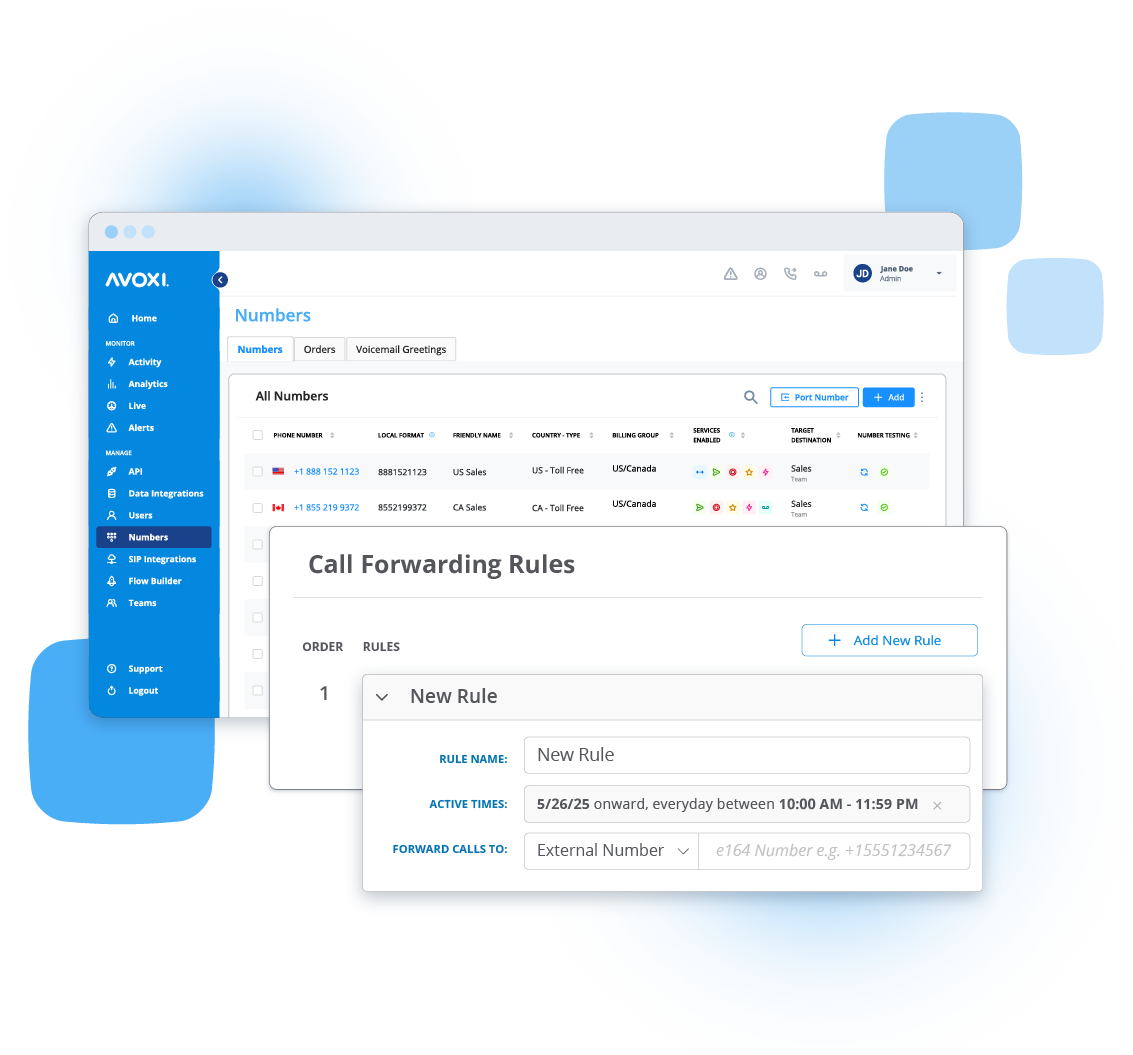
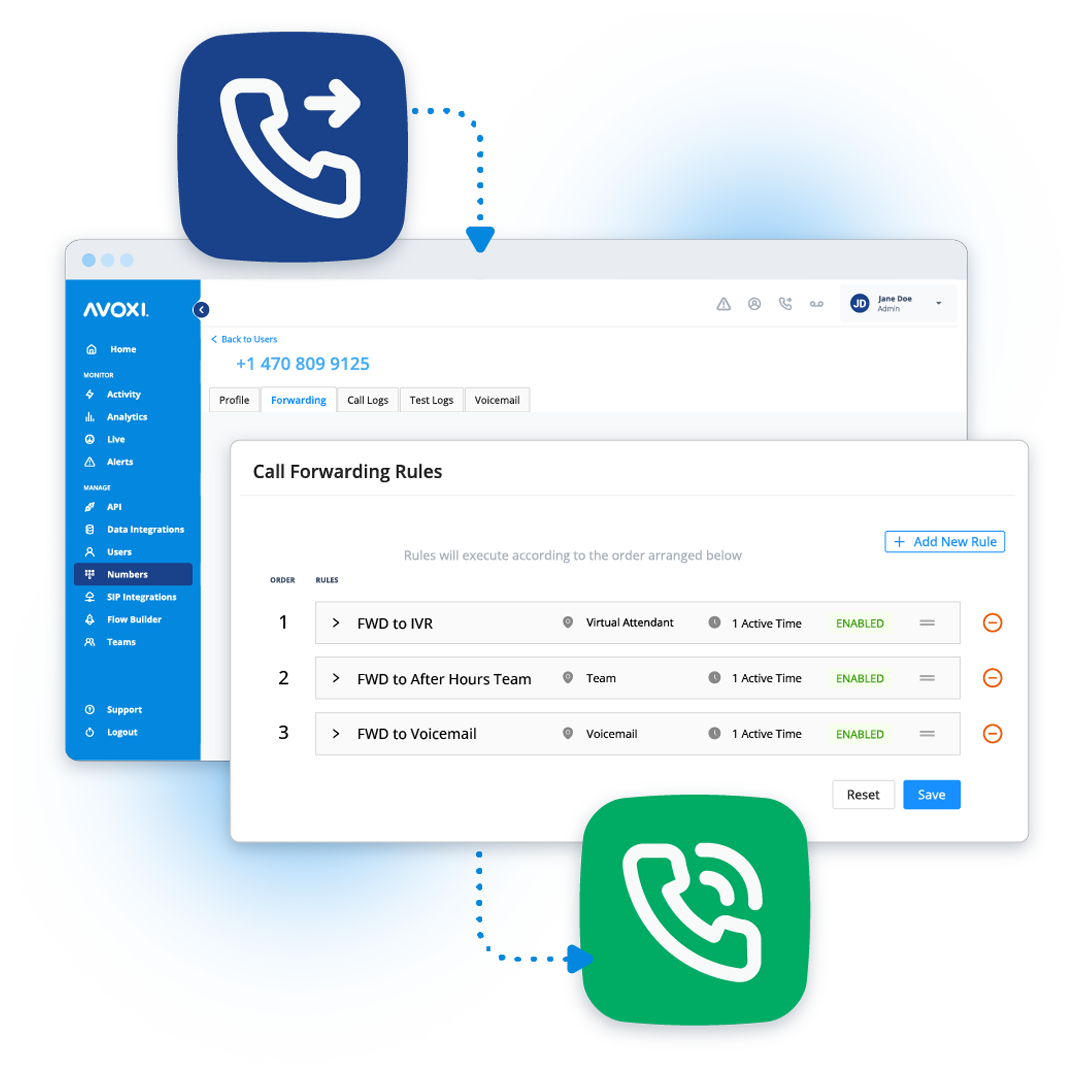
What is Call Forwarding and How Does It Work?
Call forwarding is a telecom feature that automatically redirects incoming calls from one phone number to another, providing uninterrupted connectivity regardless of location. This is especially critical for global businesses, contact centers, and enterprises that manage high call volumes across multiple regions.
Call forwarding works by routing calls based on predefined rules, which businesses can set up through a Voice over Internet Protocol (VoIP) provider, Private Branch Exchange (PBX) system, or cloud-based call management platform. These rules may include forwarding calls to another number based on business hours, caller ID, geographic location, or even network disruptions.
For multinational companies, advanced call forwarding solutions help maintain a professional presence worldwide. Features like forwarding via SIP or PSTN, intelligent call routing, time-based forwarding, and integration with customer relationship management (CRM) systems enable businesses to optimize customer interactions, minimize missed calls, and comply with regional telecom regulations.
Why Use Call Forwarding?
Businesses rely on call forwarding to:
Maintain uninterrupted communication
Forward incoming calls to your contact center software, unified communications, VoIP app, or a specific mobile or landline number, ensuring teams stay accessible—whether working in the office, working remotely, or traveling.
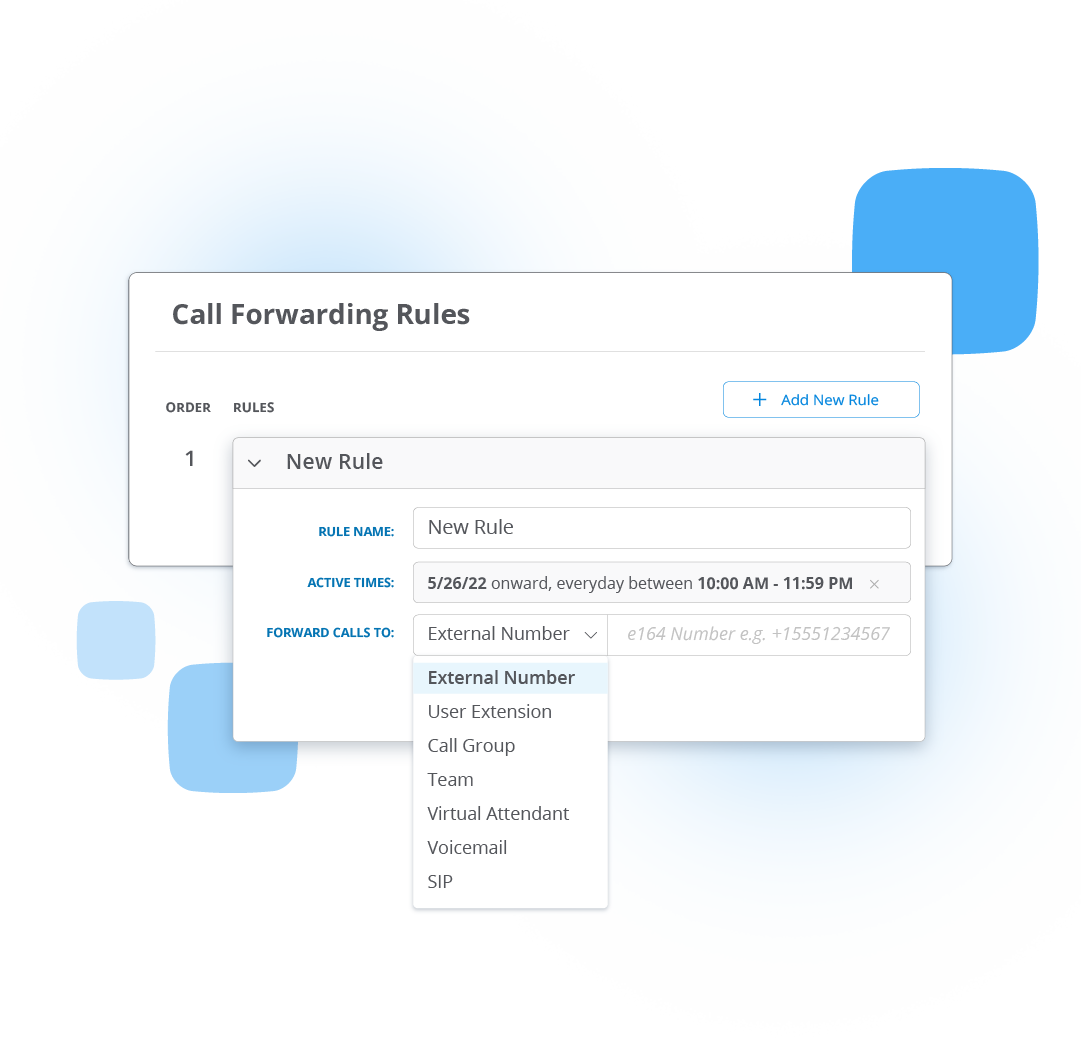
Enhance customer experience
Reduce missed calls and wait times by routing business calls based on location, business hours, or caller ID, allowing customers to connect with the correct team member.
Expand global reach
Establish a local presence in key markets with international numbers while seamlessly forwarding calls to central support teams or regional offices.
Optimize call routing
Use Interactive Voice Response (IVR), auto attendants, and time-based forwarding to direct inbound calls efficiently, helping callers reach the right department without frustration.
Scale without infrastructure limitations
Eliminate the need for physical hardware with a cloud-based phone system, making it simple to expand across multiple locations without infrastructure limitations.
Ensure business continuity
Prevent disruptions by redirecting calls during network outages, office closures, or unexpected downtime, keeping customer support available at all times.
Support flexible and mobile teams
Let employees take business calls through a VoIP phone, virtual phone system, or mobile app for reliable communication from anywhere.

Never Miss a Call: AVOXI's Advanced Call Forwarding Service
AVOXI’s call forwarding service is for businesses that demand global scalability, intelligent call routing, and hassle-free integrations. Unlike basic forwarding solutions, AVOXI offers businesses intelligent and efficient call routing, improving the customer experience and reducing missed calls. Here’s how AVOXI’s advanced features keep your communication running smoothly:
Easy Setup and Integration
Get started quickly with seamless integration into your existing contact center or phone system. AVOXI connects effortlessly with CRM platforms, PBX systems, and application programming interfaces (APIs), enabling businesses to centralize communication, streamline call management, and enhance productivity.
Localized Presence
Establish credibility in any market with local numbers, toll-free numbers, and international numbers. AVOXI’s call forwarding service ensures incoming calls reach your team, no matter where they are, helping you build trust with regional customers.
Business-Friendly Customizations
AVOXI’s business-friendly customizations help you tailor your call forwarding features to match your business needs. Use skills-based routing to connect callers with the best-suited agents, set up custom call forwarding rules for after-hours or VIP customers, and optimize IVR menus to enhance call handling efficiency.
Transparent Pricing
With AVOXI, there are no hidden fees—just straightforward pricing that scales with your business. The platform provides cost-effective call forwarding solutions with flexible plans so businesses of all sizes get the best value without unexpected charges.
Trusted by Over 5,000 Global Brands

















How to Set Up Call Forwarding with AVOXI
Setting up call forwarding with AVOXI ensures your business maintains continuous communication, allowing incoming calls to reach the right destination, whether a mobile phone, landline, or another phone system.
Follow this step-by-step guide to configure call forwarding using AVOXI:
1. Access Your AVOXI Account
Log in to your AVOXI account and navigate to the “Numbers” tab in the left-hand navigation bar. Select the specific phone number you want to configure for call forwarding.
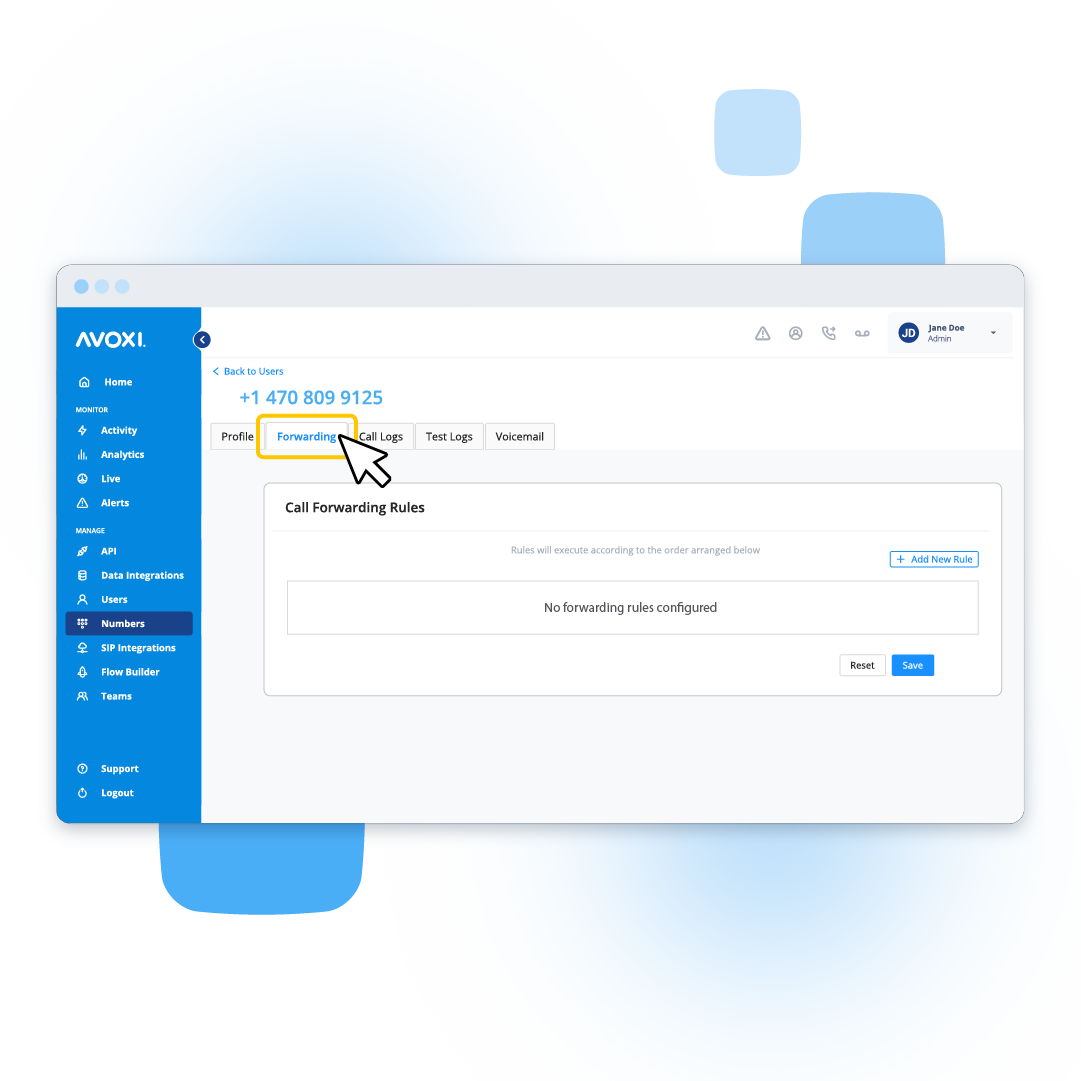
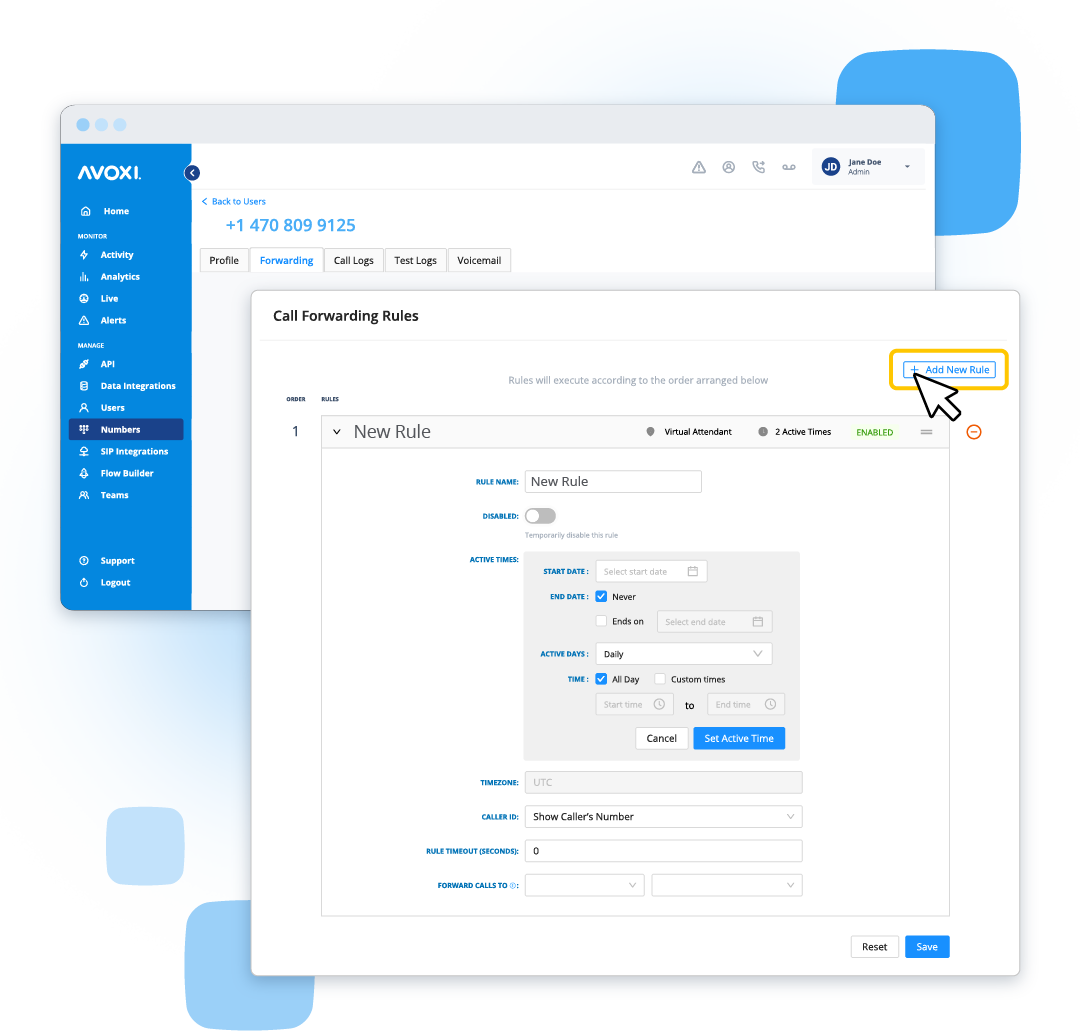
2. Configure Call Forwarding Rules
Within the number's profile, click on the “Forwarding” tab. Then click on “+ Add New Rule” to create a new forwarding rule with a descriptive name for easy identification. Define the active times to specify when the rule should be in effect, such as during specific business hours or after hours.
Decide how the caller ID will display—either the dialed number or the caller’s number. Set the rule timeout to determine how long the call should ring before the next action is applied, such as forwarding to voicemail.
3. Choose Where to Forward Your Calls
In the “Forward Calls To” section, choose your forwarding destination.
Options include forwarding to an external number (like a mobile phone or landline), a specific user extension, a team, a virtual attendant, voicemail, or a Session Initiation Protocol (SIP) address. When forwarding calls to an external number, enter the plus sign (+) followed by the country code before the number to maintain proper formatting.
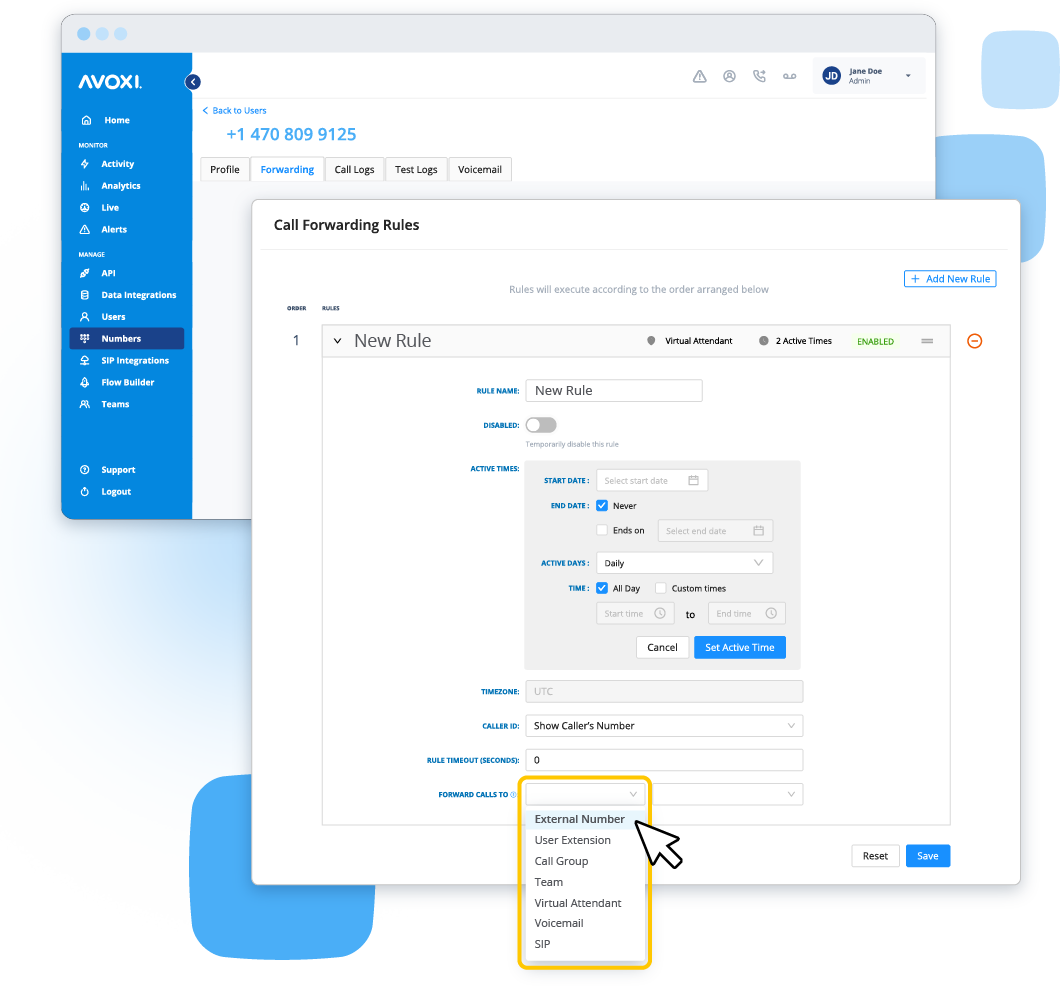
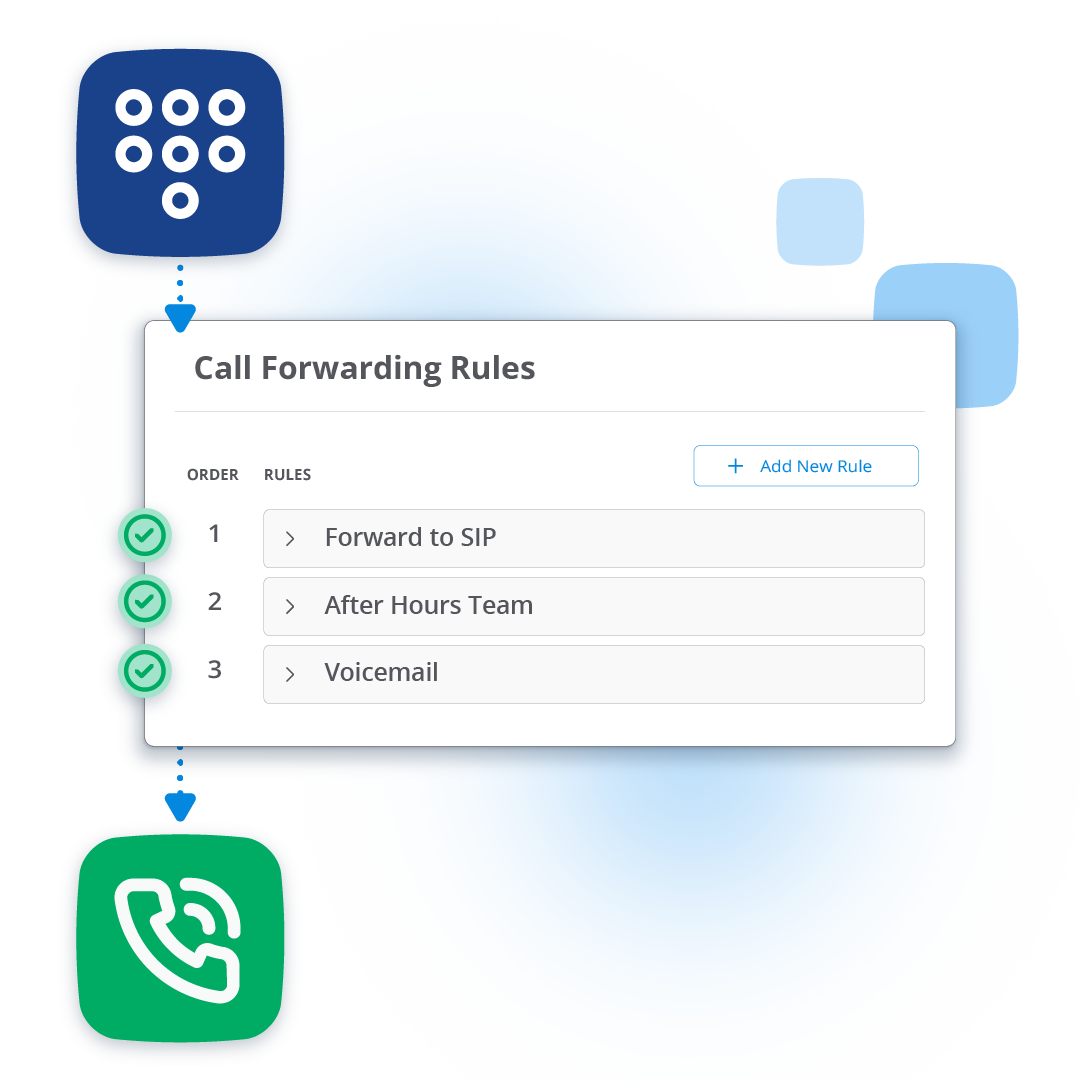
4. Test Your Call Forwarding Setup
After configuring your forwarding rule, test the setup by making a test call from another device to confirm that the call forwards to your intended destination.
5. Update Your Forwarding Rules
Regularly review and adjust your call forwarding number settings to make sure they align with your current business needs. Also, remember to update call transfer rules or destinations as necessary to accommodate changes in your organization or business hours.
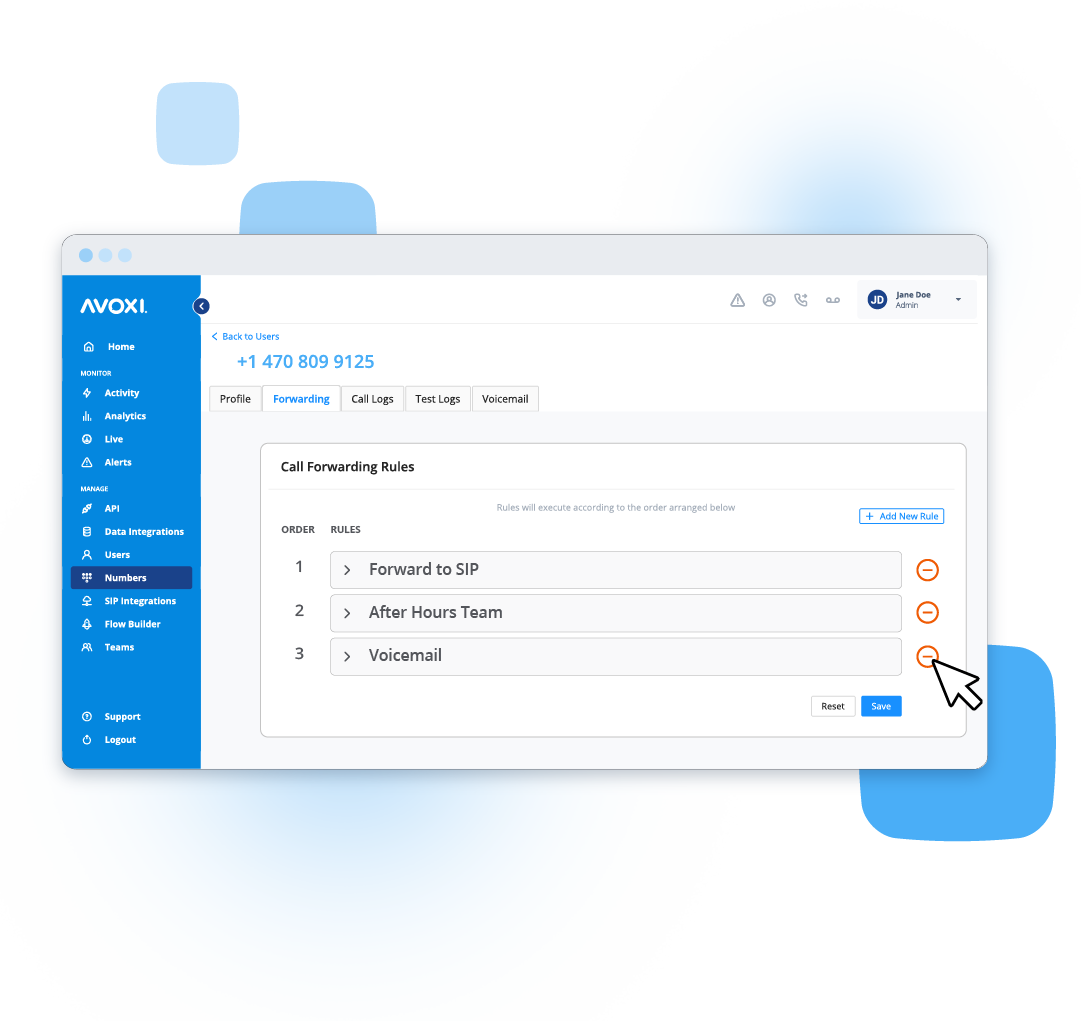
Award-Winning Call Forwarding Software
With over 20 years of experience in international communications, AVOXI is renowned for its innovative voice solutions. AVOXI has received many industry awards and recognitions, such as the INTERNET TELEPHONY Hosted VoIP Excellence Award for its Cloud Voice Platform, underscoring our commitment to delivering exceptional customer experiences.

2025 INTERNET TELEPHONY TMC Labs Innovation Award
Call Forwarding Service FAQ
Call forwarding is a telephony feature that transfers incoming calls from one phone number to another designated number or service. This guarantees that calls reach the intended recipient, even if they aren’t using their primary phone.
For instance, a business can set up call forwarding to route calls from their main office line to an employee's mobile phone or another branch office.
Yes, AVOXI's call forwarding service supports forwarding calls to international numbers. This capability lets businesses maintain global connectivity by redirecting incoming calls to various international destinations, ensuring clients and partners worldwide can reach them without disruption.
When setting up call forwarding to an international number, include the appropriate country code and follow the correct dialing format for successful call routing.
AVOXI is committed to delivering high-quality and reliable voice services. By using a robust global network infrastructure, AVOXI minimizes latency and reduces the likelihood of dropped calls.
The platform also employs advanced technologies such as voice analytics and reporting, real-time network monitoring, and automatic failover routing to optimize call performance continuously. This proactive approach guarantees businesses experience clear and consistent communication, regardless of their physical location.
The cost of call forwarding with AVOXI varies based on factors such as the destination of forwarded calls, whether calls are forwarded via SIP or PSTN, the number of minutes used, and the specific service plan. Forwarding calls to domestic numbers may incur standard rates, and international forwarding could involve additional charges.
For detailed and up-to-date pricing information tailored to your business needs, refer to our official pricing resources or contact our sales team.
No, AVOXI doesn’t have any setup fees or minimum contracts. AVOXI offers flexible service plans to accommodate various business requirements.
This flexibility allows businesses to select a plan that aligns with their operational needs and budget.
Yes, AVOXI provides options to manage caller ID information for outbound calls. Still, understanding the difference between Local Caller ID (LCID) and Caller Name (CNAM) is essential. Here’s a summary:
- Local Caller ID (LCID): This feature displays a local phone number that matches the recipient's area code, presenting a familiar number that increases the likelihood of call acceptance.
- Caller Name (CNAM): This feature displays the calling party's name alongside the phone number on the recipient's caller ID.
See our breakdown of Local Caller ID vs. CNAM for a comprehensive overview of these features and guidance on configuring caller ID settings.
Effective communication is the cornerstone of any successful business, especially in today's interconnected world. AVOXI's call forwarding service empowers businesses to:
Enhance global reach
Establish a local presence in over 150 countries, making it easy for customers to connect with you.
Improve customer experience
Use advanced routing features like skills-based routing and IVR to direct calls to the appropriate team members.
Ensure reliability
Rely on AVOXI's robust infrastructure to maintain clear and consistent communication across all channels.
Maintain flexibility
Forward calls to various devices and locations, accommodating remote work and dynamic business environments.
By integrating AVOXI's call forwarding solutions, your business can seamlessly connect with clients worldwide, develop stronger relationships, and drive growth.